Reviews
various
UK, 1963–present
Credits
Review by Leo Goldsmith
Posted on 03 September 2010
Source BBC Video DVD
External links
Categories Favorites: Time Travel
Part 1: Geneses
Since we’re talking about time, here are some varying periods to contemplate: forty-seven years (with a sixteen-year gap between 1989 and 2005), nearly 800 episodes of between twenty-five and forty-five minutes in length, with a total running time of about two weeks.
This not insignificant epoch - which doesn’t even include spin-off comic books, novels, and even the occasional stage play - represents the sum of Doctor Who, originally developed in 1963 as a larkish family-oriented show intended to fill a 5:15 slot between the sports show Grandstand and a pop music program called Juke Box Jury. It is now the longest-running science fiction television program in history, and while more prestigious-sounding records are held by news programs and soap-operas, Doctor Who’s legacy is perhaps the more striking for its curious and unlikely longevity.
The show is, after all, a decades-old serial about a quasi-academic extraterrestrial who blithely joyrides through time in a TARDIS (Time And Relative Dimension in Space), an object that looks like a tattered, blue, circa-1963 London police box on the outside, but is in fact something like an intergalactic luxury hotel on the inside, complete with a library, fourteen bathrooms, and a swimming pool. (A simple innovation of transcendental engineering, apparently.) With plot lines spanning billions of years (from Event One to Event Two, i.e. the Big Bang to the End of the Universe), Doctor Who is marked by its often (or ideally) totally ridiculous mix of heady physics, cozy Englishness, and patently homemade special effects. That this particular program of rubber masks, papier-maché robots, and fuzzy video effects should be so fondly remembered above so many other similar, yet forgotten formulae is itself something of a cosmic feat. But then Doctor Who is as much about duration as it is about time: for all the emphasis that the program puts upon the inner intricacies of time - and unlike so many time travel narratives, Doctor Who is actually interested in this stuff - its most distinguishing factor is its ability to prolong itself.
In purely formal terms, this is a propensity unique to television, at least in its original incarnation as a traditional broadcast medium. Think of all those news programs and soap-operas: each is produced in a highly controlled studio atmosphere and is largely filmed live with a multi-camera setup. This latter element of the production model was primarily intended as a more time- and cost-effective way of filming lengthy scenes—the present, it seems, is both faster and cheaper. But its effects are even more interesting: not only does the live filming give the series a more theatrical and immediate quality - often belied or made campy when combined with cheesy special effects - it also gives a very palpable sense of the mythological “liveness” of television, so often espoused and questioned by media theorists, notably Jane Feuer. With the onset of cablecasting, this experience of television as a live or seemingly live medium is rapidly disappearing—and significantly, Doctor Who’s recent incarnations, an apparent bid for primetime seriousness, have abandoned the live-shooting method in favor of more quasi-cinematic production model.
Perhaps most significantly, all of these shows rely on a constantly rotating team of creative personnel and technicians, rather than single driving forces or stars, but Doctor Who takes this production convenience a step further, building an explanation for cast-changes into the very plot of the show. Unlike the James Bond films, which have had to quietly switch out a Sean Connery for a George Lazenby and hope no one will notice, Doctor Who creates for its protagonist a good excuse to change form (and actor). A roughly thousand-year-old renegade Time Lord from the planet Gallifrey, the Doctor1 periodically regenerates, acquiring a new form when the previous one “dies” from some sort of intergalactic trauma (or old age). (One regeneration - from second Doctor Patrick Troughton to third Doctor Jon Pertwee - was enforced by the other Time Lords as a form of punishment.) Each of these incarnations has its own attributes, partly dictated by the actor playing it, from crabbiness to buffoonery, dandyishness to morbity, omniscience to amnesia. And though all the actors used to play the role are white, British males, they vary considerably in age from Troughton, who retired at seventy-seven, to new guy Matt Smith, who was hired at age twenty-six. Time, space, and identity are therefore mutable in Doctor Who—indeed, for the production to work, they have to be.
This is the first installment of a two-part review.
- This is how he is uniformly known; he is never referred to as “Doctor Who,” except in two “non-canonical” film versions starring Peter Cushing, Doctor Who and the Daleks and Daleks: Invasion Earth 2150 AD.
More Favorites: Time Travel
-

Bill and Ted’s Excellent Adventure
1989 -
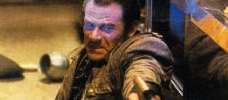
Trancers
1985 -

The Time Machine
1960 -

Groundhog Day
1993 -

Warlock
1989 -

The Navigator
1988 -
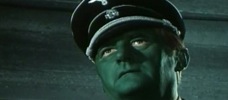
Tomorrow I’ll Wake Up and Scald Myself with Tea
1977 -
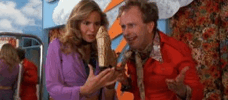
The Spirit of ‘76
1990 -

Flight of the Navigator
1986 -

La jetée
1962 -

Twelve Monkeys
1995 -
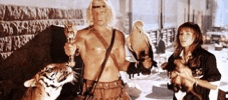
Beastmaster 2: Through the Portal of Time
1991 -

Peggy Sue Got Married
1986 -

Time After Time
1979 -
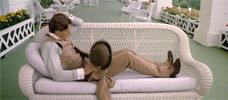
Somewhere in Time
1980 -

Back to the Future
1985 -

Back to the Future Part II
1989 -

Back to the Future Part III
1990 -

Idaho Transfer
1973 -

Unidentified Flying Oddball
1979 -
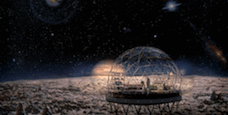
Slaughterhouse-Five
1972 -

The Lake House
2006 -

Time Bandits
1981 -

Doctor Who
1963–present -

Doctor Who
1963–present
We don’t do comments anymore, but you may contact us here or find us on Twitter or Facebook.



